Melting Moments
Our science topic for investigation this term as been a chemistry focus, where we have been looking at what happens to matter when temperatures change.
Melting ice-cream courtesy of www.GIBAY.Com
Matter, we have learnt is either solid, liquid or a gas. As we have noticed these states can change depending on temperature and they can swap between the states changing from solid to liquid then back to a solid. Matter does behave strangely at times.
We began our investigation with a homework study task by observing matter around the home that melted. We had a wide range of items which for the most part were observed in the kitchen – butter, honey, margarine, coconut oil, melting on toast/pancakes or in pans. Marshmallows, chocolate and ice melting in hot/cold drinks. Ice-cream melting at room temperature. Plastic in fires etc. The students used their science skills in recording their observations some used line drawings and others included a photo. All recorded that heat was responsible in some way for changing the material.
That got us ready for the first activity – Heating Things Up Unfortunately I didn’t visually record this work, but we did have a rather interesting scientific discussion based on our experiences and used the predict reason observe explain method. A summary of our predictions is below.
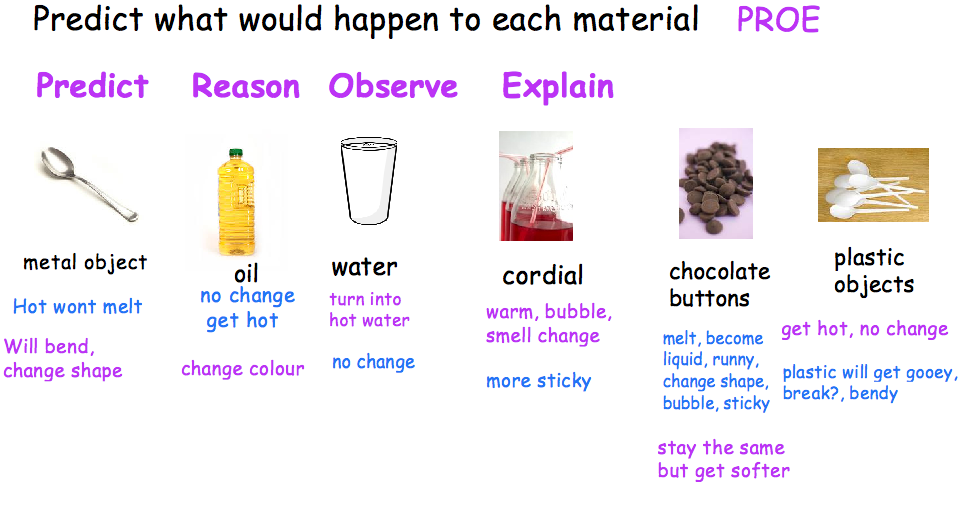 Working in teams the students chose a random list of three objects and sealed them in plastic bags. They labelled them appropriately and placed the samples in front of a heat source (my portable blow heater), we observed them for sometime with no change in state occurring. Working on our efficiency skills we began to realise we could probably use our time to read the next exciting chapter in the class novel, well it was at an exciting cliff hanger! So we left our samples to their fate.
Working in teams the students chose a random list of three objects and sealed them in plastic bags. They labelled them appropriately and placed the samples in front of a heat source (my portable blow heater), we observed them for sometime with no change in state occurring. Working on our efficiency skills we began to realise we could probably use our time to read the next exciting chapter in the class novel, well it was at an exciting cliff hanger! So we left our samples to their fate.
When we returned, we noticed a lot of our predictions were spot on. Using a recording sheet we revised the essentials of line drawings and used this skill to record and describe the changes observed.
We then placed the same samples in the refrigerator for Cool Customers and repeated the process. The next step was to place the samples in the freezer, but by that stage we had set up a story board with our previous recordings.
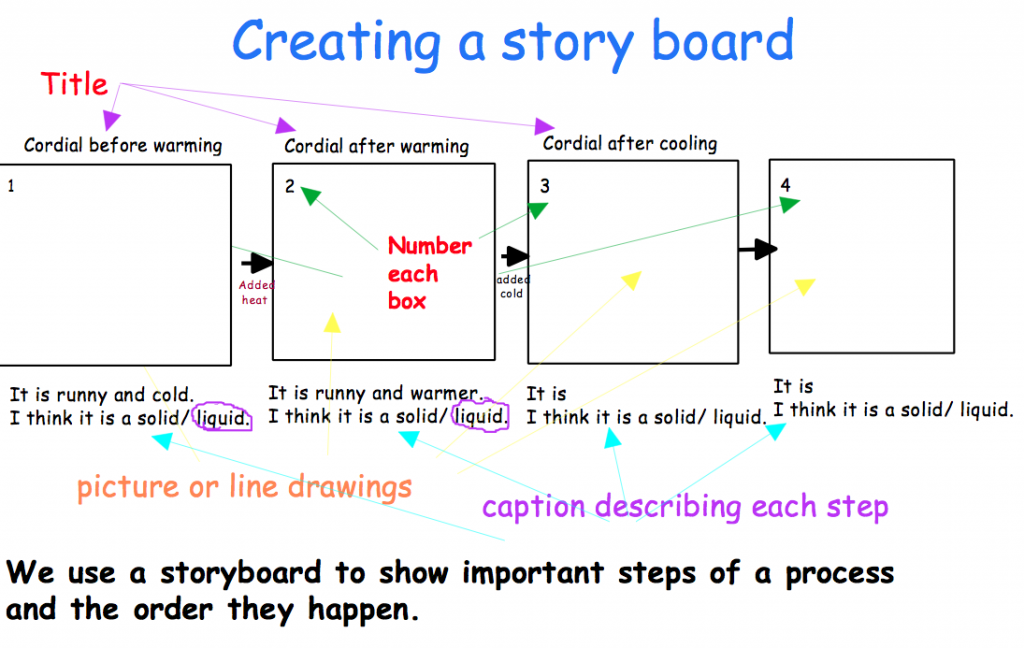 As students were creating their story boards they were discussing their predictions on what they would find when adding even more cold, explaining their reasons using descriptive language from our word wall e.g. colder than, stickier than etc.
As students were creating their story boards they were discussing their predictions on what they would find when adding even more cold, explaining their reasons using descriptive language from our word wall e.g. colder than, stickier than etc.
 Even Rocky gets into the act of scientific discussion.
Even Rocky gets into the act of scientific discussion.
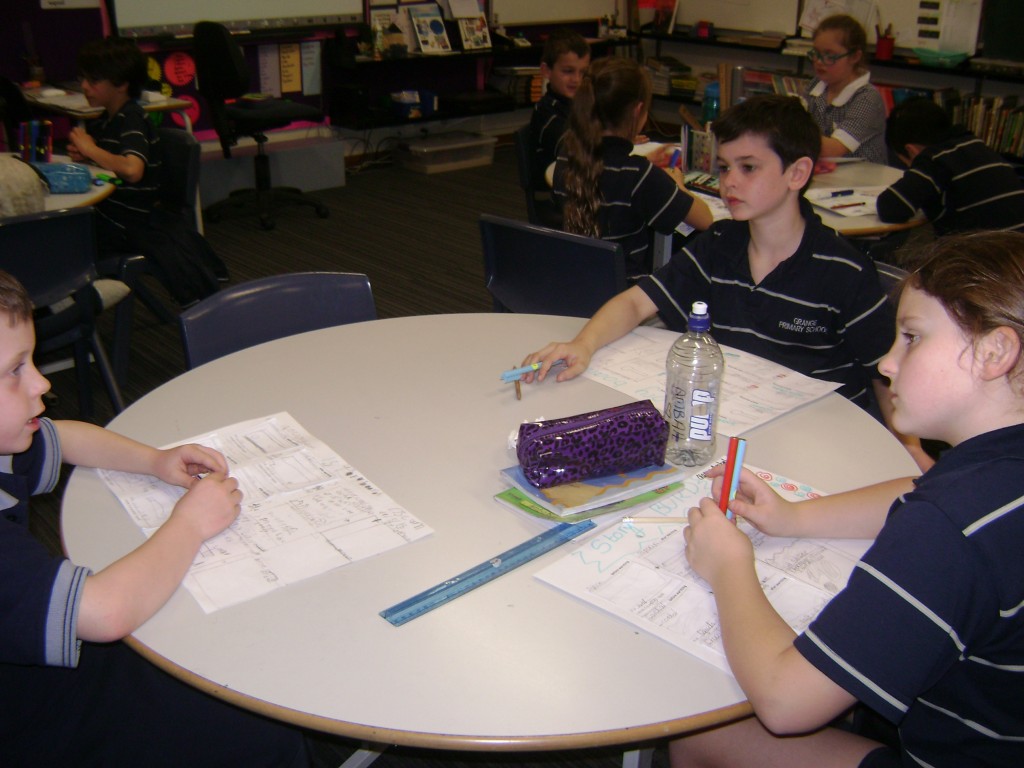 Great eye contact to the speakers learning team two.
Great eye contact to the speakers learning team two.
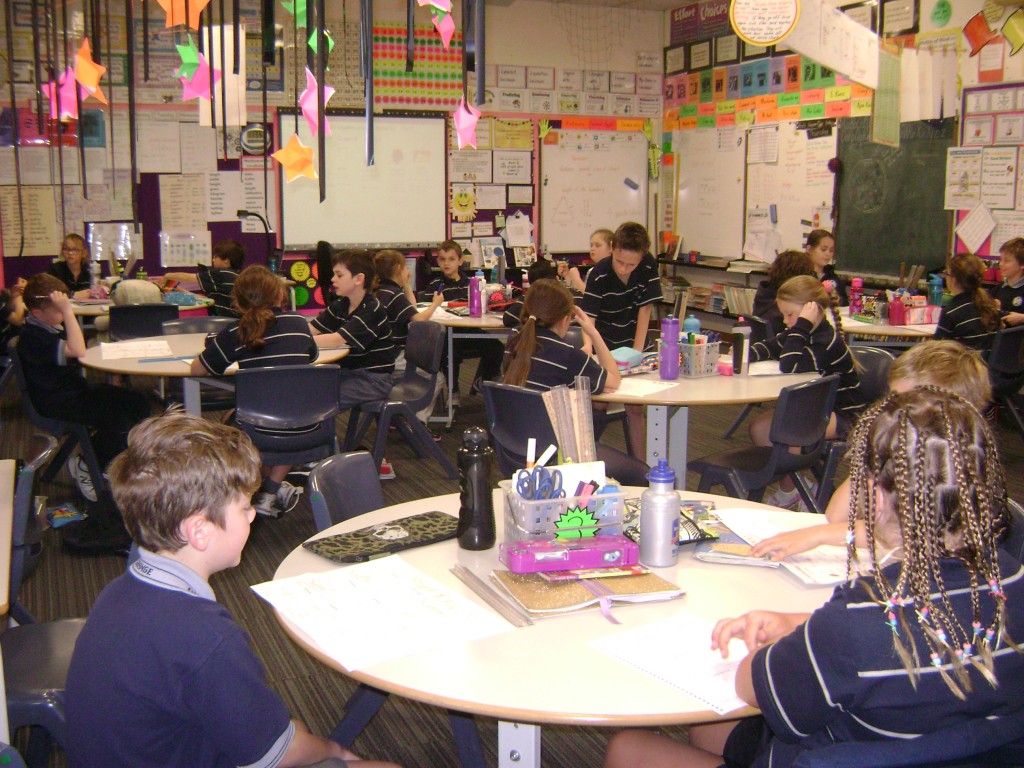
 “Ooh it feels cold and hard. It’s like ice but it’s squishy.”
“Ooh it feels cold and hard. It’s like ice but it’s squishy.”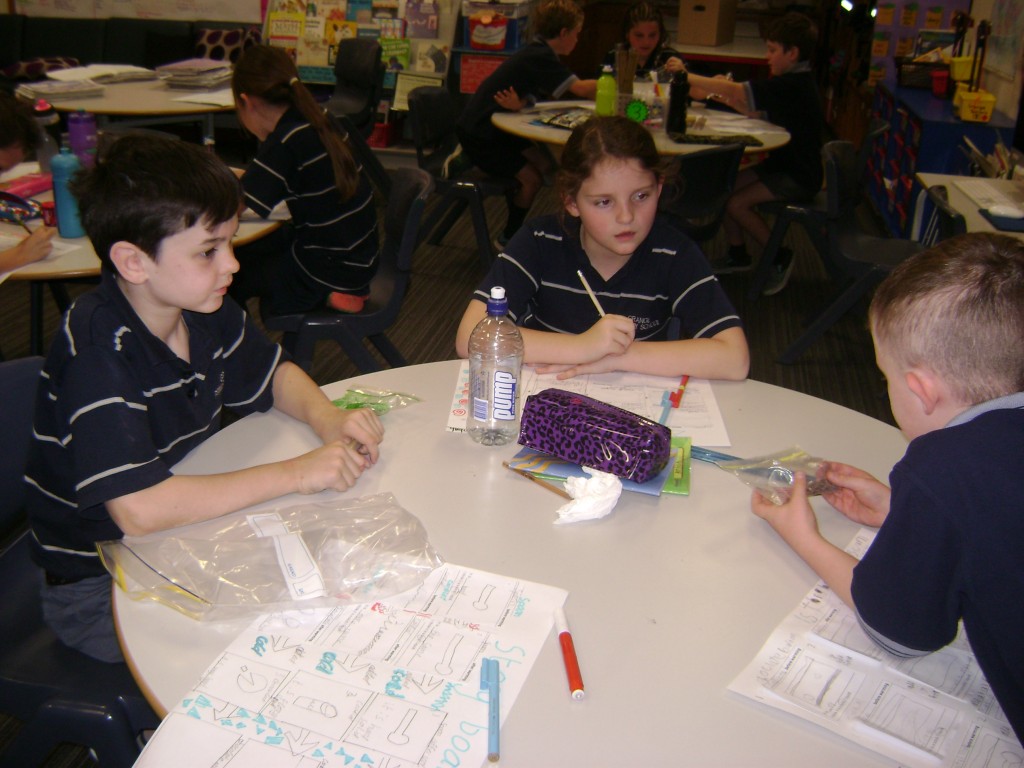
Once we rechecked our frozen samples we used the findings from our discussions and observations to complete our story boards. What do you think?
What part of theses investigations so far did you find most interesting and fun to do?
What questions about this topic do you have? These question starters may help you come up with some.
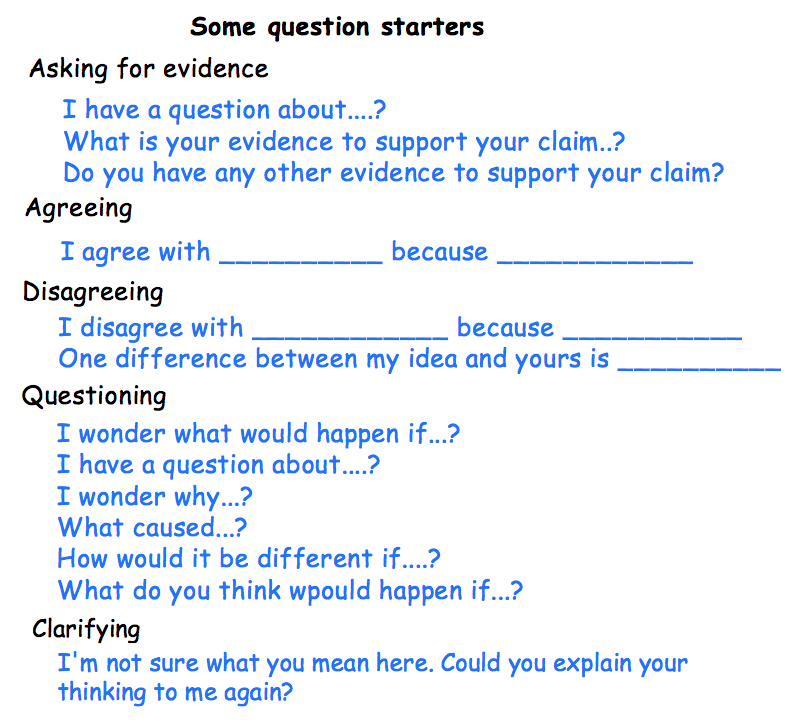 We are enjoying continuing to explore the changes in states of matter due to changes in temperature. We began our next activity with a role play where we took on the matter and decided the state we’d be in depending on the temperature. We divided the room into a liquid zone and a solid zone. As each temperature was selected the different matters needed to place themselves in the correct zone. Then we recorded our observations.
We are enjoying continuing to explore the changes in states of matter due to changes in temperature. We began our next activity with a role play where we took on the matter and decided the state we’d be in depending on the temperature. We divided the room into a liquid zone and a solid zone. As each temperature was selected the different matters needed to place themselves in the correct zone. Then we recorded our observations.
Science Literacy
Part of science is recording our observations in a way that is easy to read and provides information quickly. Our literacy skills came in handy with this task. We decided to use a table which needed a Title, columns with headings and data collated under under each heading.
We began using full words for each section but then the class realised that by having a code S for Solid L for Liquid it made the table much easier to read and faster to record.
Once completed we were able to read the information and make some powerful claims based on data we collected.
Now the tricky part we had to write our own definition of solid, liquid and gas.
How would you explain these states to someone unfamiliar with the idea?
Our last investigation was rather interesting. We wanted to see if chocolate would melt faster if it was in smaller pieces. We predicted that it probably would as our knowledge of heating things up and checking out how solids change state is pretty good by now and it made logical sense when we compared it to our experiences.
In our teams we collected the equipment and set about to break two chocolate buttons into smaller pieces, while we left two buttons whole. We kept all variables the same except the size of the chocolate. We recording the steps of our investigation as we completed each part.
Once all teams were ready, we placed the bags in front of a heat source and kept a stop watch going to find the time the contents of each bag would change state from a solid to a liquid. The smell of melting chocolate was making some people hungry.
We discovered that indeed the smaller pieces did melt a lot faster than the large piece of chocolate, but it depended on where the bags were placed. We also found out that some bags are not suitable for being close to heat as they burst and shrivelled up. We wouldn’t recommend using cheap thin bags!
Our claim is that the smaller the piece of chocolate the faster heat can travel through the object and it will lose its shape and change from a solid to a liquid. The evidence for this is that the results from this experiment clearly show that when chocolate is broken up the time it takes is faster than if it remained a larger piece.
What has been the most interesting part of this unit of study?
Are you interested in other freezing and melting experiments?















